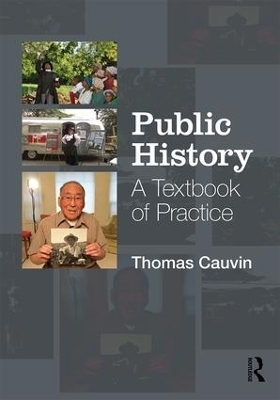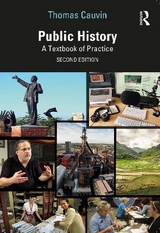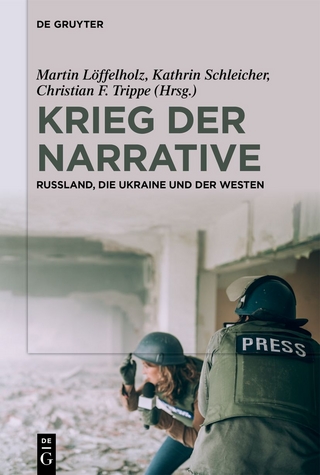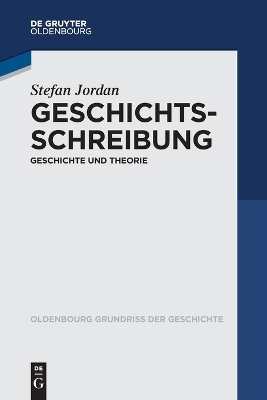
Public History
Routledge (Verlag)
978-0-7656-4591-3 (ISBN)
- Titel erscheint in neuer Auflage
- Artikel merken
Part One focuses on public history sources, and offers an overview of the creation, collection, management, and preservation of public history materials (archives, material culture, oral materials, or digital sources). Chapters cover sites and institutions such as archival repositories and museums, historic buildings and structures, and different practices such as collection management, preservation (archives, objects, sounds, moving images, buildings, sites, and landscape), oral history, and genealogy. Part Two deals with the different ways in which public historians can produce historical narratives through different media (including exhibitions, film, writing, and digital tools). The last part explores the challenges and ethical issues that public historians will encounter when working with different communities and institutions. Either in public history methods courses or as a resource for practicing public historians, this book lays the groundwork for making meaningful connections between historical sources and popular audiences.
Thomas Cauvin is Assistant Professor of History at the University of Louisiana at Lafayette.
Introduction: Historians Public Roles and Practices
The Role of Historian: A Short History
Professional Historians
The Rise of Scientific History in the late 19th and early 20th centuries
Historians in Ivory Towers
Diversity of Public Profiles
Local Historians
Government, Military Historians, and the Concept of Applied History
Historians under Contract
The Emergence of a Public History Movement
Local History, Social Engagement and Activism
The Public History Movement in the United States
Public History: Approaches and Definitions
Defining Public History: A Difficult Task
Historians and Popular Non-Academic Audiences
Public or Applied History? The Uses of the Past
Working "With" Audiences: Public Historians and Shared Authority
History, Memory, and Audiences
Institutionalization and Internationalization of Public History
A Textbook of Practice
Why a Textbook on Public History?
From Practice to Practices
Part I: Collecting, Managing, and Preserving the Past. Public History and Sources
Chapter 1. Collection Management: Archives, Manuscripts and Museums
Archives, Manuscripts, and Museum Collections
Archives and Manuscript Collections
Museum Collections
Introduction to Collection Management
The Selection Process: Planning, Acquisition, and Examination
Recording Collections: Accessioning, Arrangement and Description
Accessioning and Arranging
Description and Metadata
Preserving Collections
Treatment and Conservation
Preservation and Digitization
Deaccessioning
Challenges in Archival Collection Management
Selection Process in Archival Repositories
Born-Digital Archives: New Specific Items
Arrangement in Archival Repositories
The Specific Management of Museum Collections
Selection Process
Examination of Material Culture
Accessioning Items from a Variety of Donors
What Can Public Historians Bring to Collection Management?
The Design of Historical Collections
Public Historians and the Tensions Between Use (Access) and Storage (Restriction)
Maintain Public Access to the Collection
Collaboration and Public Participation
Chapter 2. Historic Preservation
Preserving the Past: Definitions, Purposes, and Debates
Cultural Resource Management, Historic Preservation, and Public History
Historic Preservation Practices
Actors and History of Historic Preservation: Grassroots and Official Programs
86
Finding and Describing Historical Resources
Historic Houses
Urban and Industrial Sites
Landscape and Parks: (Re)-source and Preservation
Sites of Death
Public Archaeology
Historic Preservation and Sustainability
Evaluation of Sites and Structures: Preliminary Preservation Research
Designing a Nomination for Historic Preservation
Process
Criteria for Nomination
Exceptions, Exclusions, and Refusals
International Criteria: UNESCO’s World Heritage Sites
Protection and Preservation Technology: Standards, Styles, and Materials
Legal Protection and Economic Assets
Preservation Technology
Historic Districts, Revitalization and Cultural Repair
Creating Historic Districts
Urban Revitalization
Cultural Repair of Post-Industrial Areas
Chapter 3. Collecting and Preserving People’s Stories. Oral History, Family History, and Everyday Life
Oral History Practices
What Does Oral History Bring to Historical Practice?
Starting an Oral History Project
Interviews: a Set of Practices
Transcription and Preservation of Interviews
Family, Community, and Everyday life: Sources for Public Historians
Family History and Genealogy
Community History
Everyday Life
People’s History and Personal Experiences: Assets and Challenges for Public Historians
People’s History as Academic Research: the Case of Family Stories
From Public Participation to the Absence of Historian?
Historical Practice and Personal Experiences: The Question of Subjectivity
Stories and the Celebration of the Past
Go Beyond Personal Experience
Subjectivity from Narrators and Historians
Part II: Making Public History. Media and Practice
Interpretation in Public History
History and Fiction
Copyrights, Protection, and Fundraising
Copyrights
Fundraising and Grant-Application in Public History
Chapter 4. Public History Writing
Academic, Popular, and Public History Writing Styles
Adopting a Public Style: Writing for Large Non-Specialist Audiences
Fiction and Historical Novels
Children Literature, Comics and Graphic Novels
Children’s Books
Comics and Graphic Novels
Digital Public History Writing
Chapter 5. Editing Historical Texts
Introduction to Documentary Editing: Definition, Purposes, and Debates
The Role of Editors
The Birth of Modern Edition
Step-by-step Historical Editing Process
Acquisition
Accession
Selection
Transcription
Principles
Crowdsourcing and Transcription
Text Encoding
Verification, Annotation, Indexing
Verification
Annotation
Index
Submission
Chapter 6. Interpreting and Exhibiting the Past
Sites and Purposes of Interpretation
Public Historians and Interpretation
Sites and Purposes of Interpretation
Collaboration and Public Participation
Project Development and Interpretive Planning
Evaluating Institutions and their Audiences
Sites and Institutions
Audiences
Design Brief and Interpretive Planning
Requirements
Visitors and Public Participation
Interpretive Planning at Historic Sites
Exhibiting Design: Space, Objects, and Visitors
Exhibiting Space
Public and Exhibition Design
Interpretive Texts
Curating Public Space: Art and Public History
Chapter 7. Radio and Audio-Visual Production
History on Air: Radio and Sound Archives
Film and Documentary: Introduction to History on Screen
Making History on Screen
Study, Review, Advise the Works of Others
Production of "Good" – and Popular – History on Screen
History on Screen as Public and Participatory History?
Entertainment and Reality (History) Television
Partners, Training, and Tools
Chapter 8. Digital Public History
The Rise of Digital Practices
Digital Humanities
Digital History
Digital Public History and User-Generated Contents
From Digital History to Digital Public History
Crowdsourcing and Digital Public Engagement
Web Design, Programming, and Systems for Digital Public Historians
Programming
Web Design
Creating Usable Digital Sources: Database and Text Encoding
Chapter 9. Immersive Environments or Making the Past Alive
Immersive Environment and the Recreation of the Past
Immersion, Living-History, and Re-enactment
Challenges for Living History Sites
Performing the Past in Immersive Environments
Theatre, First-Person Interpretation, and Historical Performance
Tours and Performance
Audiences Participation
Re-Enactments
(Video) Games and Immersive Environments
Games and Time Travels
Video Games
3D Virtual Reconstruction
History in 3D
Process, Technology, and Tools
PART III: Collaboration and Uses of the Past
Chapter 10. Teaching Public History: Creating and Sustaining University Programs
Creating Public History Programs
How to Create an Appropriate Public History Program?
Teaching Theory and Practice
Chapter 11. Shared Authority. Purposes, Challenges, and Limits
Public History and Shared Authority
Historians and Emotions
Celebrations of the Past: Historians and Pride
Identity and History: Celebration versus Commemoration
Public Historians as Actors of Commemorations: A Quest for Pluralism
The Limits to Shared Authority
The Difficult Past
When Sharing Authority is Impossible
Radical Trust
Chapter 12. Civic Engagement and Social Justice. Historians as Activists
From Civic Engagement to Social Justice
Public History as a Source of Social Empowerment for Under-Represented Groups
Native Populations
Looting and Repatriation
Migrants
Slavery and Segregation
Women and Gender History
LGBT, Queer, and Sexual Practices
Mainstream History
Public Historians and Everyday Suffering
Criminality, Incarceration, and Prison Memories
Poverty and Exclusion
History for Peace: Human Rights, Apologies, and Reconciliation
Human Rights and Coming to Term with the Past
Apologies
Reconciliation
Chapter 13. Historians as Consultants and Advisors: Clients, Courtroom, and Public Policy
Public Historians under Contract
Entrepreneurship and Corporate Historians
Working Under Contract
Clients and Contracts
Restriction
Contracts for Historians’ Benefit
Fees and Expenses
Historians in the Legal Process
A Variety of Issues
The Role of Historians as Expert Witnesses
Why Historians? What Sort of History?
Pressure and Ethical Works
Evidence
Conflicts of Interest
Federal and Government Historians, Public Policy, and Policymaking
Federal and Government Historians
Typology
History
The Role of Historians in Federal and Government Agencies
Publication
Public Policy
Public Policy in Need of Historians
History in Policy Making Rather Than History for Policy Makers
| Erscheint lt. Verlag | 24.5.2016 |
|---|---|
| Verlagsort | London |
| Sprache | englisch |
| Maße | 174 x 246 mm |
| Gewicht | 550 g |
| Themenwelt | Geisteswissenschaften ► Geschichte ► Geschichtstheorie / Historik |
| ISBN-10 | 0-7656-4591-2 / 0765645912 |
| ISBN-13 | 978-0-7656-4591-3 / 9780765645913 |
| Zustand | Neuware |
| Informationen gemäß Produktsicherheitsverordnung (GPSR) | |
| Haben Sie eine Frage zum Produkt? |
aus dem Bereich



